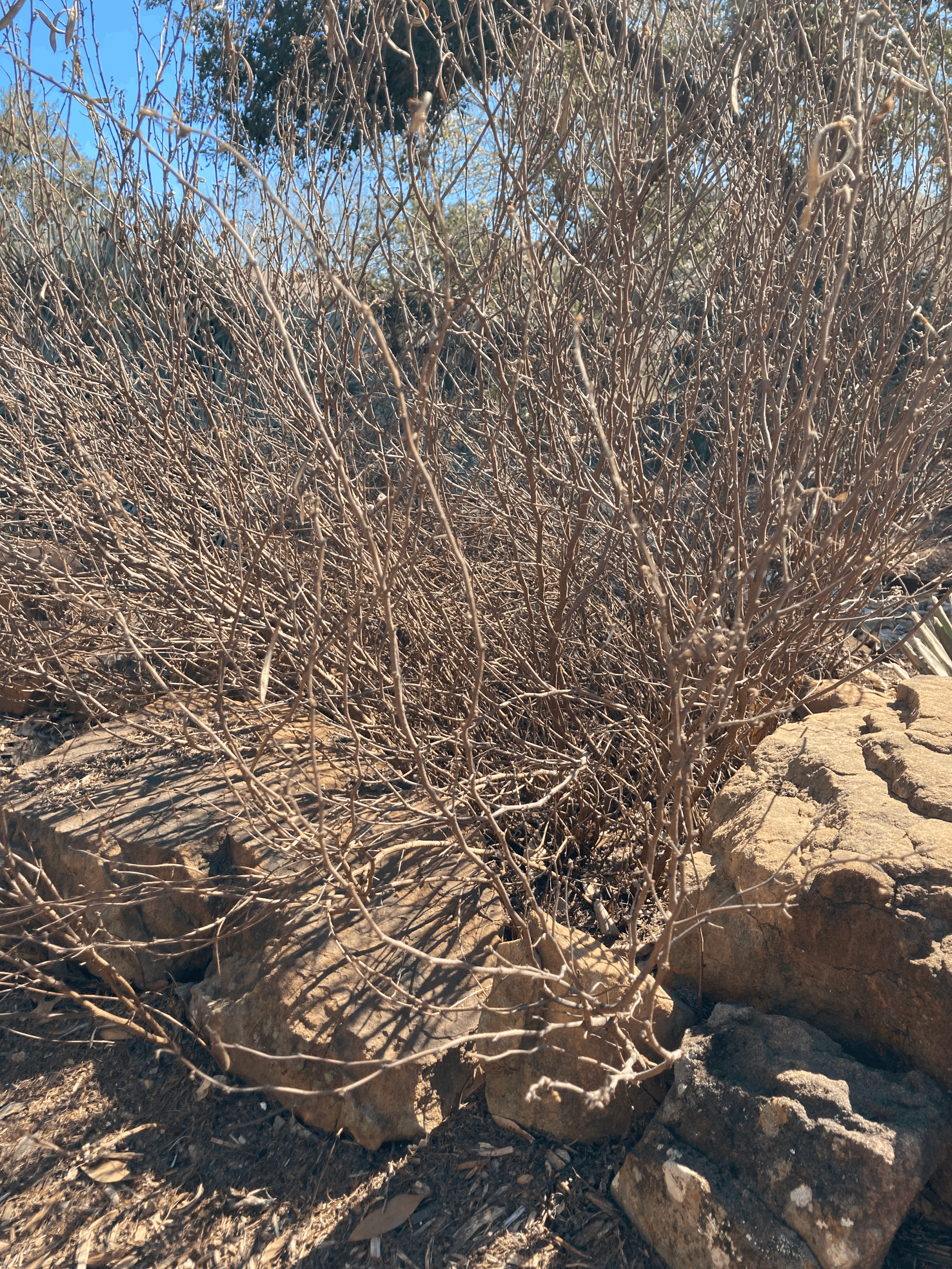Don’t cut back those plants…yet!
For the last few years, Central Texas has experienced consecutive deep freezes. These weather events can result in short and long term damage to landscape plants. When damage results in rotten plant parts, immediate pruning of all affected parts can minimize risk of infection. Plants not showing evidence of rot are best left as is until late February to middle March and later depending on plant.
By keeping damaged plants (without rot) as is, one allows for a thriving garden with increased numbers of beneficial insects and birds. Leaves and fruits remaining on ground and plants are food and nesting supplies for birds and insects. The plants parts on ground suppress weeds and minimize erosion while increasing nutrients available to plant roots.
Herbaceous plants, unlike woody trees and shrubs, can mostly all be pruned in late February to middle March and in a similar manner. Mature herbaceous plants can be pruned down in size by 2/3rd. Pruning these plants annually will stimulate increased growth and strength resulting in a longer lived plant, minimize disease risk, and create a more attractive landscape.
Keep in mind that springtime may be early this year in Central Texas.









